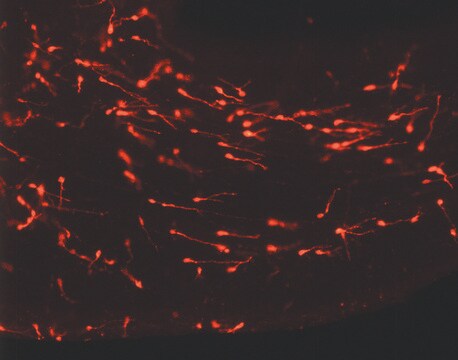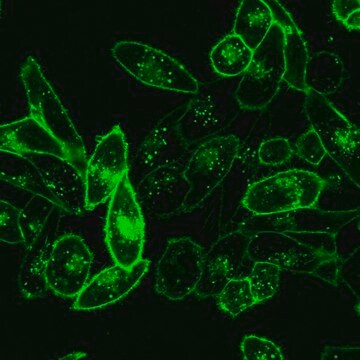18620
Atto 633
BioReagent, suitable for fluorescence
About This Item
Polecane produkty
linia produktu
BioReagent
Poziom jakości
Próba
≥90.0% (HPLC)
Postać
solid
producent / nazwa handlowa
ATTO-TEC GmbH
λ
in ethanol (with 0,1% trifluoroacetic acid)
absorpcja UV
λ: 627-633 nm Amax
przydatność
suitable for fluorescence
temp. przechowywania
−20°C
Zastosowanie
Informacje prawne
Kod klasy składowania
11 - Combustible Solids
Klasa zagrożenia wodnego (WGK)
WGK 3
Temperatura zapłonu (°F)
Not applicable
Temperatura zapłonu (°C)
Not applicable
Środki ochrony indywidualnej
Eyeshields, Gloves, type N95 (US)
Certyfikaty analizy (CoA)
Poszukaj Certyfikaty analizy (CoA), wpisując numer partii/serii produktów. Numery serii i partii można znaleźć na etykiecie produktu po słowach „seria” lub „partia”.
Masz już ten produkt?
Dokumenty związane z niedawno zakupionymi produktami zostały zamieszczone w Bibliotece dokumentów.
Klienci oglądali również te produkty
Produkty
Pomiar czasu życia fluorescencji ma przewagę nad pomiarami opartymi na intensywności. Zastosowania obejmują testy czasu życia fluorescencji, wykrywanie i FLI.
Nasz zespół naukowców ma doświadczenie we wszystkich obszarach badań, w tym w naukach przyrodniczych, materiałoznawstwie, syntezie chemicznej, chromatografii, analityce i wielu innych dziedzinach.
Skontaktuj się z zespołem ds. pomocy technicznej




